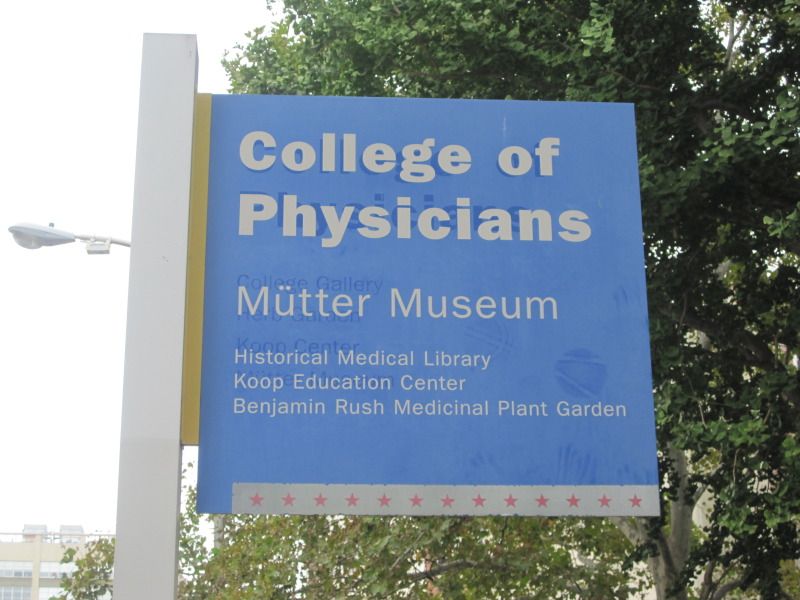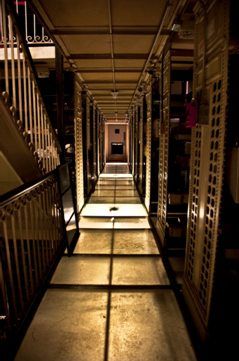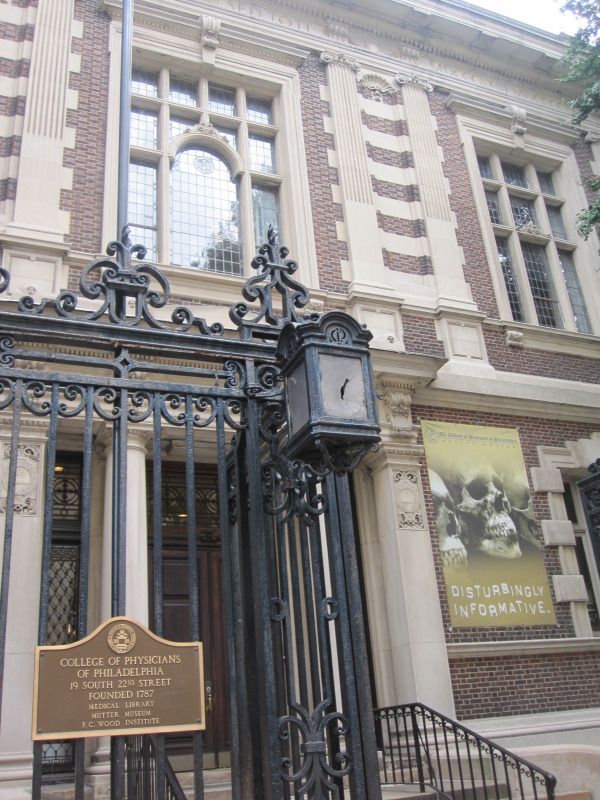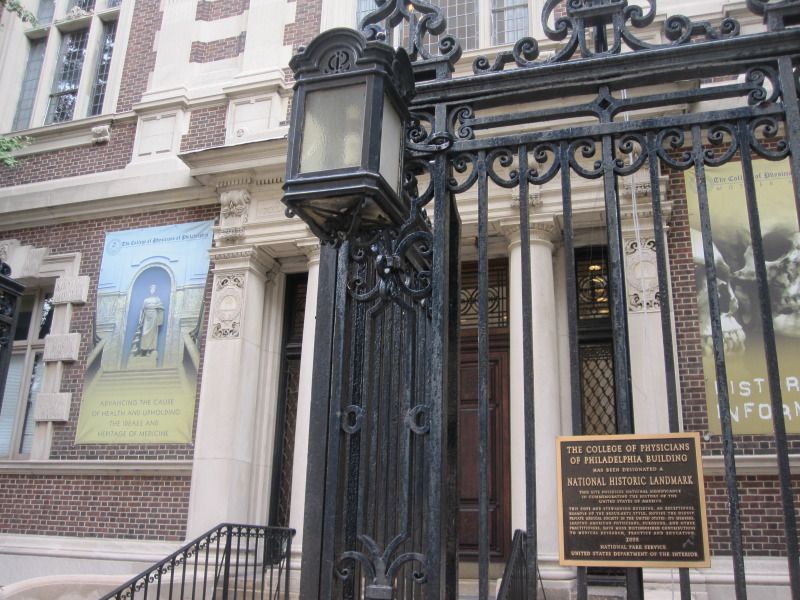
The museum is amazing. It definitely has disturbing elements. For me, the wall of fetal deformities was a little difficult to take in. There were exhibits linking Grimm's Fairy tales to medical conditions, and I learned more than I ever intended about skin conditions and the assassinations of Lincoln and Garfield. Check out this article from the British Society for the History of Science Travel Guide for more information about the museum. There was a wonderful quote on a display description that sums up the importance of the collection well.
"A great museum collection is as important to medical education as a great library because specimens are nature's books"
 While at the Mütter I learned about the Historical Medical Library also housed in the building. Established in 1788, it's one of the world's premier research collections into the history of medicine. Over 400 incunables, manuscripts, archives, and 19th and 20th century medical journals. Sadly, I did not have an appointment, so I could not visit the stacks. The library is open by appointment only Tuesday, Wednesday, and Thursday, 10:00am to 4:00pm.
While at the Mütter I learned about the Historical Medical Library also housed in the building. Established in 1788, it's one of the world's premier research collections into the history of medicine. Over 400 incunables, manuscripts, archives, and 19th and 20th century medical journals. Sadly, I did not have an appointment, so I could not visit the stacks. The library is open by appointment only Tuesday, Wednesday, and Thursday, 10:00am to 4:00pm. If you want to see specifics, you can search the catalog online. The Catalog search help is fairly comprehensive if you would like a tutorial in how to use their catalog system.
Also available for distance visitors are the digital resources, Digital Books and two digitized 18th Century Manuscripts.
See the library website for history of the collection, or read this very informative article from the Pennsylvania Center for the Book, which is part of the Literary and Cultural Heritage Map. Photos are not allowed within the museum so these shots of the door and the one taken from the library website above will have to satisfy your visual cravings.



No comments:
Post a Comment